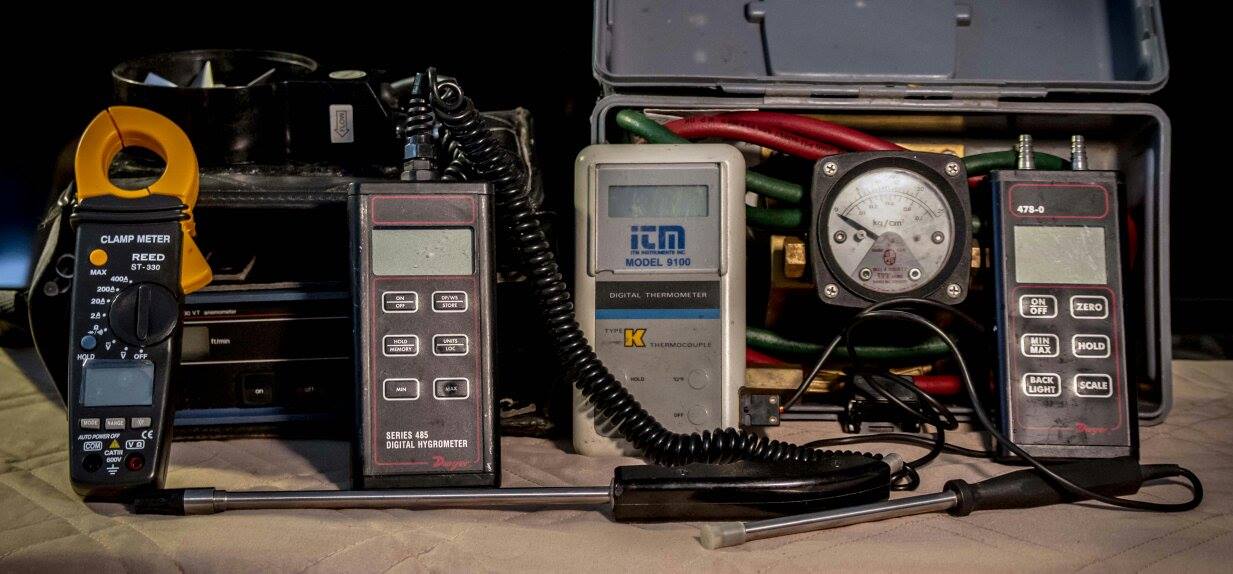Air Balance Dual Duct Air Systems
Air balance dual duct air systems speaks to what is a dual duct air system and how to air balance dual duct air system.
Check and note the following items on the supply and return fans.
Correct fan rotation.
Filter condition.
Cooling coil condition.
Set the system to operate with maximum return air and minimum outside air. This will simulate winter operating conditions.
Set the hot and cold deck temperatures to design and allow control system to become satisfied.
The following preliminary data should be obtained at the supply and return fans.
Fan and motor RPM.
Motor current and voltage.
Fan, coil and filter static pressure.
Nameplate data on the fans and motors.
Motor sheave, fan pulley and belt sizes.
To air balance dual duct measure the static pressure at the end of each branch.
Traverse the return duct to determine the CFM delivery of the fan.
Adjust the return fan to approximately 5% above design CFM and the supply fan where the end of each branch is at least at design delivery.
Starting at the volume controller closest to the fan, set the thermostat to full cool.
Make preliminary outlet readings and proportionally balance the outlets.
Adjust the volume controller to obtain the design delivery.
Adjust the outlets for design delivery. No adjustments should be made during the final set of readings.
Set the thermostat to full heat.
Reread one outlet served by the volume controller. If thee is a change of more than 10%, reread all outlets and note this fact.
Set the thermostat to its normal set point.
Working away from the fan, repeat the steps for all controllers.
Balance the return system.
Air Balance Dual Duct Fans
The following data should be obtained at the supply and return fans.
Fan and motor RPM.
Motor current and voltage.
Fan, coil and filter static pressure.
Motor sheave setting.
Check the following controls.
Economizer system - function, calibration and dampers.
High temperature limit shutoff - function and calibration.
Low temperature limit shutoff - function and calibration.
Set the hot and cold decks to design settings. Measure the hot and cold deck temperatures.
Set the thermostat serving one volume controller to full cool.
Measure the discharge air temperature at the first outlet served by the volume controller. If the air temperature is more than 3 F below the cold deck temperature, the mixing dampers should be inspected for leakage and repaired.
Set the thermostat to full heating.
Measure the discharge air temperature at the first outlet served by the volume controller. If the air temperature is more than 3 F below the hot deck temperature, the mixing dampers should be inspected for leakage and repaired.
Set the thermostat to its normal set point.
Set all controls to their normal set points.
Return to Professional Air Balance
Return from Air Balance Dual Duct to homepage
Hard copy and E book for sale. Introduction to Building Mechanical Systems. Click here.
Hard copy and E book for sale. What's Killing You and What You Can Do About It. A humourous look at ageing and disease. Click here.
